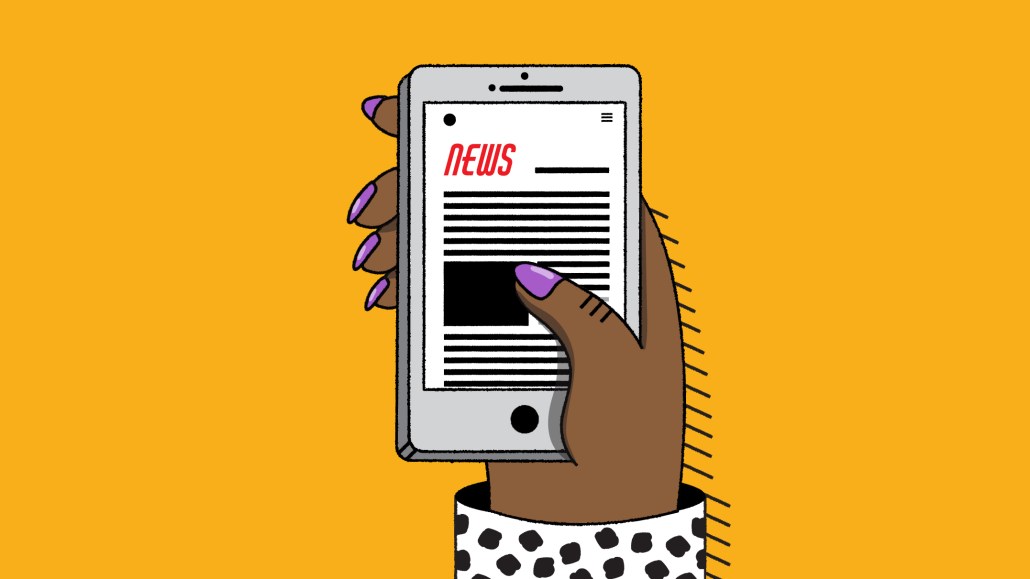Save 50% on a 3-month Digiday+ membership. Ends Dec 12.
How a women’s basketball vertical convinced the WNBA to fund its foray into print

What’s old is new again.
WSLAM started out two years ago as a channel on social media under SLAM, the basketball magazine running for over two decades. Now, the digital vertical covering women’s basketball is going analog, with a special print issue on Sept. 15 sponsored by the WNBA, to coincide with the league’s 25th anniversary.
“The lack of coverage in women’s basketball has always existed,” said WSLAM director Camille Buxeda. “The formation of this magazine now is a representation of reaching a new point of varied content about women’s basketball.”
WSLAM’s upcoming 82-page special issue will be sent to SLAM’s print subscribers for free and available for purchase on SLAM’s ecommerce site, slamgoods.com, for $8.99. The magazine is timed to publish before the women’s basketball playoffs (and will be available in most WNBA arenas for free) and the week the regular WNBA season ends. Buxeda sees this issue as the potential kick-off for a WSLAM annual magazine, though she did not give exact figures on how many ads will be in the print publication or how many subscribers it has.
WSLAM’s deal with the WNBA includes digital and social extensions of the publication as well. Stories will run online, and video and graphic assets featuring Betnijah Laney, Diamond DeShields and Arike Ogunbowale, the three WNBA players on the cover of the WSLAM magazine, will be distributed on social. The same production, design and sales resources for SLAM’s magazine issues are behind WSLAM’s issue.
The deal with the WNBA is WSLAM’s biggest direct deal so far, according to Camille Buxeda, WSLAM director, who declined to share how much money the WNBA had put down. It’s also WSLAM’s first campaign with the WNBA. “We’re in talks to do a couple more,” Buxeda said (before joining SLAM in 2019, she worked at the WNBA in social and digital content). While the magazine would have been “possible” even without the WNBA’s support, the league’s backing gives the product “a stamp of authenticity,” said Adam Figman, chief content officer of SLAM.
Advertisers’ interest in women’s sports
Women’s sports content has not historically attracted the same level of advertisers’ interest or investment as men’s sports. That might be changing — slowly. Sports marketing agency rEvolution has seen an uptick from brands and sponsors “who have expressed interest in getting more involved in women’s sports and are looking for opportunities to be more equitable in their sponsorship strategies,” said Larry Mann, evp of media and business development at rEvolution.
Kristi Wagner, director of Content+ at media agency Mindshare, said she is seeing a shift in interest from brands in women’s sports. “I would not say it’s as if a switch has flipped and the space is getting flooded with investment, but the interest is noticeably growing,” she said. Her team is in discussion with multiple brands about the landscape of female sports and the opportunities that exist within it.
Big brands are backing women’s basketball. Google announced in May that it would sponsor the WNBA games to bring them to national TV. Beer brand Michelob Ultra announced on Aug. 26 that it was committing $100 million to women’s sports over the next five years, and dedicating 50% of its lifestyle media inventory to content that features and promotes female athletes and women’s sports by 2025. The company also said it will represent male and female athletes equally in all advertising creative moving forward.
The hope is that this initiative “will inspire other brands and leaders in the industry to follow us,” said Ricardo Marques, vp of marketing at Michelob Ultra US & global.
WSLAM’s rise
WSLAM started out as a social channel on Twitter and Instagram, then later grew to TikTok, Facebook and YouTube. The vertical hit 100,000 followers on Instagram in its first year and the four-person team has now accumulated an audience of nearly 300,000, according to Buxeda.
In WSLAM’s early days, its social accounts were used to distribute branded content that was also being shared across other SLAM channels, rather than sharing original branded content specifically for WSLAM. Since last summer, it has worked with brands like Nike, Adidas and Footlocker, such as a longform video series sponsored by Under Armour called “All Eyes On Us.”
Branded content is WSLAM’s biggest source of revenue. It makes up about 70% of its business, with the rest coming from merchandise and events (though so far WSLAM has been a part of bigger SLAM events). In the future, Buxeda hopes to host WSLAM-specific events.
The WNBA deal with WSLAM “could be the start of a virtuous cycle in the content and advertising ecosystem of women’s sports,” Wagner said. Advertisers see a marketing opportunity around big cultural milestones like the WNBA’s 25th anniversary, and the “engaged and loyal” female sports fans around these moments, she said. Publishers in turn see advertisers leaning in, so they invest in producing more women’s sports content and “are more inclined to produce more meaningful marketing opportunities,” Wagner said.
“It becomes a cyclical dynamic that could fuel substantial growth in women’s sports,” she said.
More in Media

Meta enters AI licensing fray, striking deals with People Inc., USA Today Co. and more
The platform has secured seven multi-year deals with publishers including CNN, Fox News, People Inc., USA Today Co to incorporate their content into its large language model (LLM) Llama.

European publishers say the Digital Omnibus ‘cookie fix’ leaves them worse off
The European Union’s attempt at a legislative spring clean for Europe’s web of data privacy rules, has landed flat with publishers.

Digiday+ Research Subscription Index 2025: Subscription strategies from Bloomberg, The New York Times, Vox and others
Digiday’s third annual Subscription Index examines and measures publishers’ subscription strategies to identify common approaches and key tactics among Bloomberg, The New York Times, Vox and others.








